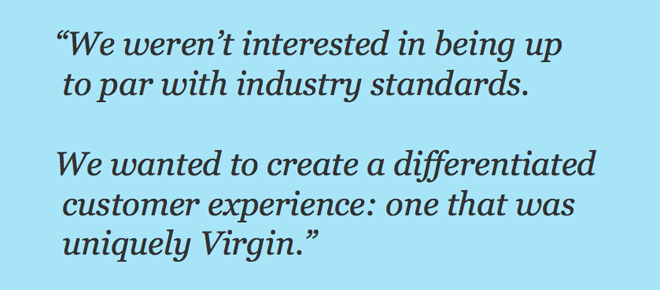Customer Understanding: Do You Really Know What Your Customers Want And Need?
Right now, companies around the world are barreling down a perilous path — one that isn’t illuminated by customer insights. These companies might think they know what their customers want, but Forrester’s research shows that most companies today have an incomplete — or worse, downright wrong — understanding of who their customers are, how they perceive the current interactions, and what they want and need in the future.
In Forrester’s soon-to-publish book, Outside In, Harley Manning and I illustrate the importance of customer understanding through a case study about Virgin Mobile Australia. The company recently earned the No. 1 spot in customer satisfaction in its market. But in their hearts, Virgin Mobile’s execs knew that the customer experience they provided was pretty much indistinguishable from those of their competitors. And for a company operating under the Virgin brand name, that was a big problem.
Matt Anderson, the former COO of Virgin Mobile, told me, “We weren’t interested in being up to par with industry standards. We wanted to create a differentiated customer experience: one that was uniquely Virgin.” To do that, the company had to take an outside-in view and examine what the Virgin brand meant from the customer perspective.

So Virgin asked some of its customers to create online diaries, and every day for a week asked them questions about Virgin’s brand values: simplicity, fairness, and control. (Words we all naturally associate with our wireless carriers, right?)
Here’s how one customer answered those questions: “I feel like I’m out of control when I am cooking without a recipe. It makes me feel like I am not getting the best possible result. I know the ingredients that I have at hand would make a nice dish, but I cannot get there.”
Before this study, Virgin Mobile thought “control” meant giving customers options to modify their contracts based on their individual needs. To that end, the company was about to move from 19 standard billing plans to a system where customers could slice and dice hundreds of different plan features any way they wanted, like some kind of giant telecom salad bar.
But the diaries indicated that infinite options weren’t what customers wanted at all. To customers, “control” meant having a greater understanding of a smaller number of choices. This was a critical insight — one that compelled the Virgin Mobile execs to change their strategic direction and one that they wouldn’t have learned had they been content to rely on what they thought their customers wanted.
Thinking you know what customers want is incredibly risky. Knowing what they want leads to customer experiences that matter.
Customer understanding is just one of six disciplines that companies must master if they want to achieve the full potential of customer experience. The others are strategy, design, measurement, governance, and culture. Of course, most of these concepts aren’t new in the business world — but they do take on a slightly different twist when it comes to customer experience. If you’d like to know more about the six disciplines and how they’ll help you create great experiences for your customers, please visit outsidein.forrester.com.